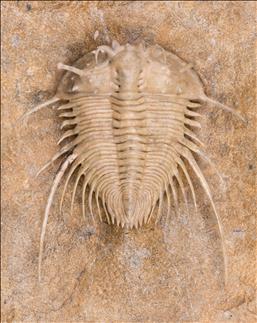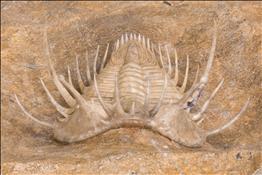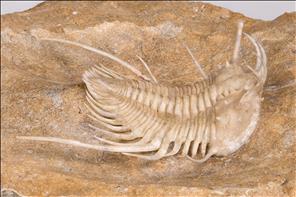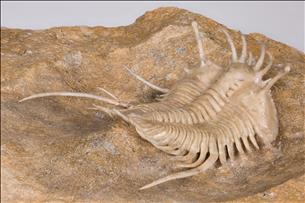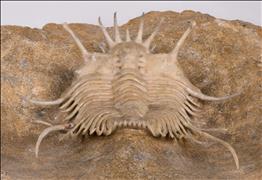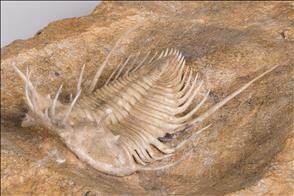This species is a relative of Cybele panderi, but has prominent genal spines and has four large spines between the eye stalks as well as some smaller spines that produce the "crown" that gives this trilobite its species name.
What was the purpose of the eye stalks? The usual hypothesis, given for Cybele panderi and for Asaphus kowalewskii, is that they were stealth predators they lay buried in the mud waiting for prey to come along before popping up and grabbing it. The stalk eyes would be the only part of the trilobite above the mud. With this trilobite the long genal spines and head spines make it a good deal less streamlined than Cybele panderi or Asaphus kawalewskii, so jumping out of mud after being buried in it doesn't sound so plausible. Perhaps the purpose of the eye stalks was no more complicated than allowing the trilobite to see further than if the eyes were at the same level as the rest of the head.
This is a rare trilobite. When I got this it was one of four complete specimens that had ever been found.
